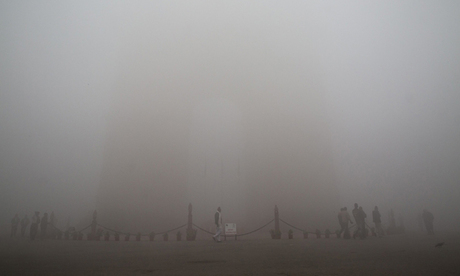The Rising Cost of Climate Impacts in India
The impacts of climate change over the last few
years have been growing in scale and suffering as the poorest and the
most vulnerable in India take the biggest hit. Take the recent crop
devastation caused by unprecedented hail storms
in central and southern India where over a 100 farmers committed
suicide unable to bear the debt they accrued with another year of
massive losses. It is hard not to see the climate connect when for many
regions that suffered this storm, the precipitation was the highest ever
in their recorded history. The state of Maharashtra, the worst hit by
the storm is in fact yet to recover from the worst drought
it had seen in 40 years that affected 30 million people in the summer
of 2013. Such incidents reinforce the vicious cycle that put farmers in
perennial debt.
If erratic rainfall is one issue, the intensity of it is
another. We don’t have to look too far into our past to remind us of the
biblical floods
that ravaged the state of Uttarakhand in June last year. An incredible
downpour swallowed over 5000 lives and put a dent in the state’s tourism
for a long time to come. The frequency and intensity of cyclones
battering India has also gone up in the last decade. A case in point is
cyclone Phailin, a freak superstorm that left a trail of destruction in its path across the eastern coast of India in August ‘13.
The Intergovernmental Panel on Climate Change (IPCC) warns
that further inaction on climate change will only exacerbate the erratic
rainfall patterns, crop loss, heat waves, droughts and other extreme
weather events in India. The challenge as expected does not limit itself
to the poorest, as we are beginning to witness indirect effects of
extreme weather in the form of rising food prices and ever burgeoning
costs of relief and rehabilitation.
Acting on climate change in the Indian context involves
both mitigation and adaptation. Proactive measures need to be taken to
support people in staving off the worst impacts of extreme weather
whilst creating a vision of development that does not focus on
aggravating the problem by increasing carbon emissions through our
dependence on fossil fuels.
As the world’s largest democracy goes to polls
this year, a lot is at stake for the future of those teeming millions
of Indians who are barely making ends meet. As political parties of all
hues and colours promise development, it is difficult yet important to
separate the wheat from the chaff and so far it’s all been chaff.
Development that pulls over 300 million people out of poverty is a
national imperative but the current policies and polity of parties
across the spectrum grossly ignore the impacts of climate change on
their well adorned development driven manifestos.(Below are images of the hail storm in Maharashtra and the cyclone Phailin in Odisha)




